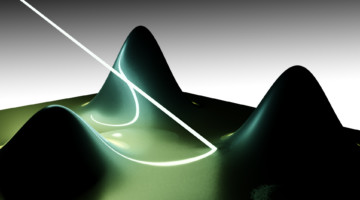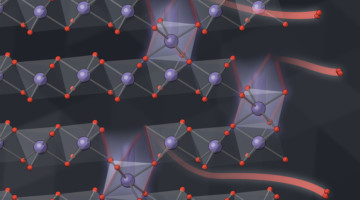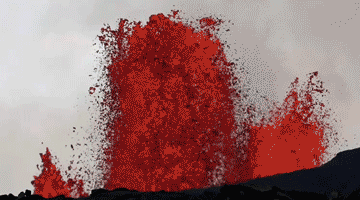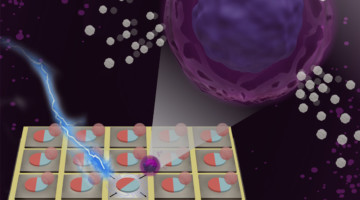This year’s Halbach Award for Innovative Instrumentation at the ALS went to a team of accelerator physicists and computer scientists who were able to use machine-learning techniques to solve a problem that has plagued third-generation light sources for a long time: fluctuations in beam size due to the motion of insertion devices. Read more »
ALS Work Using Microscopy/Imaging
These techniques use the light-source beam to obtain pictures with fine spatial resolution of the samples under study and are used in diverse research areas such as cell biology, lithography, infrared microscopy, radiology, and x-ray tomography.
Autonomous Data Acquisition for Scientific Discovery
Researchers at large scientific facilities such as the ALS have applied a robust machine-learning technique to automatically optimize data gathering for a variety of experimental techniques. The work promises to enable experiments with large, complex datasets to be run more quickly, efficiently, and with minimal human intervention. Read more »![]()
![]()
A Multiscale Picture of Oxygen Loss in Battery Electrodes
In lithium-ion batteries, oxygen atoms leak out of electrode particles as the lithium moves back and forth between electrodes. Now, researchers have measured this process at multiple length scales, showing how the oxygen loss changes the electrode’s structure and chemistry, gradually reducing the amount of energy it can store. Read more »
In a Hawaiian Lava Fountain, Fluid Magma Turns Brittle
Compared to the violent explosions of Mount Vesuvius or Mount St. Helens, Hawaiian volcanic eruptions are relatively calm, characterized by flowing rivers and fountains of lava. Here, researchers have discovered that even low-viscosity magma sometimes behaves more like brittle glass that shatters into fine particles. Read more »
Nanoscale Metallic Particles Detected in Brain Tissue
Researchers detected nanoscale deposits of elemental copper and iron in brain tissues isolated from Alzheimer’s disease subjects. The discovery suggests new directions of study to determine the role that elemental metals might play in neurochemistry, neurobiology, and the development of neurodegenerative disease. Read more »![]()
![]()
EPSCoR Collaboration Fosters New Research and New Careers
The DOE Established Program to Stimulate Competitive Research (DOE EPSCoR) encourages partnerships between national labs and researchers in qualifying states and territories. An EPSCoR collaboration with researchers from Kentucky has resulted in an ALS highlight, career advancement for young scientists, and a larger, center-scale proposal. Read more »
Artificial Spin Ice Toggles Twist in X-Ray Beams on Demand
ALS studies helped scientists understand how a nanoscale magnetic lattice (an artificial spin ice) acts as a toggle switch for x-ray beams with spiral character. The findings represent an important step toward the development of a versatile new tool for probing or controlling exotic phenomena in electronic and magnetic systems. Read more »![]()
![]()
Single-Domain Multiferroic Array-Addressable Terfenol-D (SMArT) Micromagnets for Programmable Single-Cell Capture and Release
Researchers develop programmable multiferroic micromotors that enable single-cell manipulation based on time-dependent functions of individual cells, such as cell secretion. Smart programmable multiferroic materials lay the groundwork for large-scale automated single-cell sorting and enable a broad spectrum of biotechnology applications. Read more »
Programmable Micromagnets for Single-Cell Sorting
Researchers demonstrated that electrically induced mechanical strain can control the magnetic state of tiny magnets used to sort biological cells. The work lays the foundation for a programmable, single-cell sorting platform to support a wide variety of biotechnology applications, including personalized cancer treatments. Read more »![]()
![]()
New Tools Link Catalytic Activity to Nanoscale Transformations
Transitioning to a clean hydrogen economy will require cheaper, more efficient ways to split water molecules. To address bottlenecks in the water-splitting process, researchers developed a suite of advanced tools, including a liquid flow cell that enables electrochemical studies of catalysts under working conditions. Read more »
- « Previous Page
- 1
- …
- 5
- 6
- 7
- 8
- 9
- …
- 19
- Next Page »









